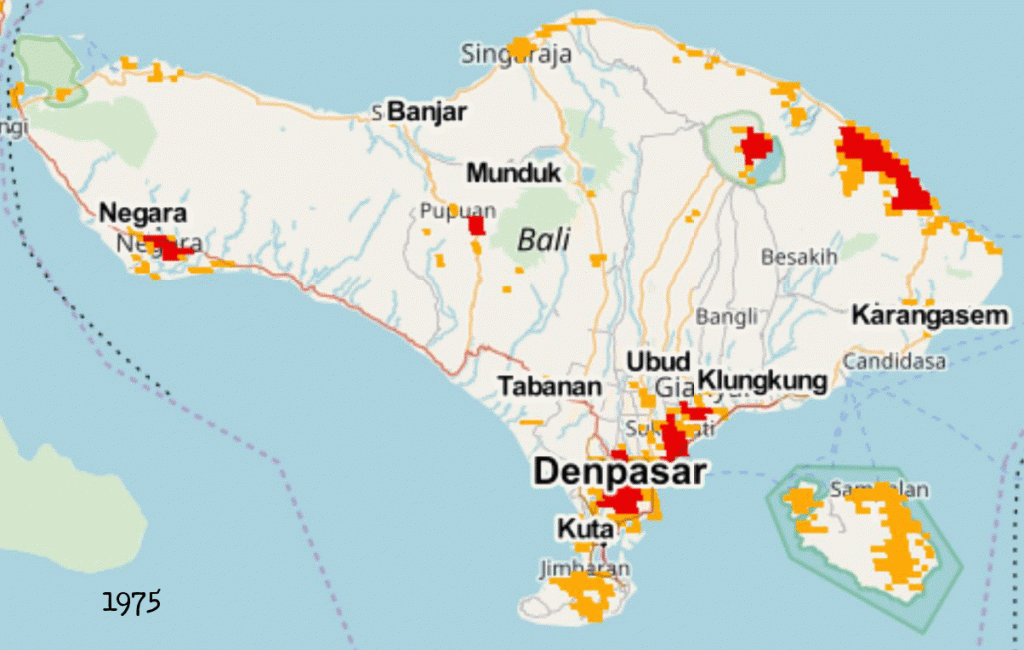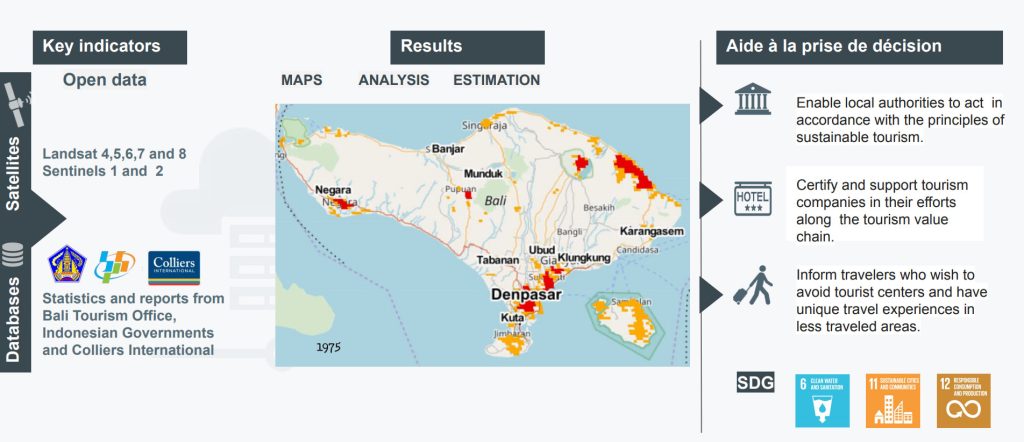Tourism accounts for more than 10% of global GDP and 7% of all international trade activity. With $6.1 billion in revenue, tourism is the world’s third largest exporter, ranks after chemicals and fuels and ahead of automotive products.
Moreover, tourism is a local development aid when it leads to improvements in terms of infrastructure, such as transport (airports, roads, rail networks), land use planning for drinking water and sanitation, energy consumption, medical services, mobile phone networks and security that are appreciated by tourists and locals alike.
Inclusive growth in the tourism sector affects other sectors. Indeed, tourism depends on a large supply chain, which includes transport providers, interpreters, accommodation, agricultural producers, catering, energy, water supply, preservation of heritage. cultural, arts and crafts, construction and maintenance of buildings, preservation of biodiversity and wildlife. Thanks to this inclusive approach, tourism can benefit a large number of people.
In addition, there is a big issue for both urban and rural populations. By 2050, the urban population will increase to 66 percent, or six billion people, with concentrated growth in Asia and Africa. Many cities will continue to base their economic growth on tourism and its potential for job creation and infrastructure improvement. Rural communities attract investment to promote rural areas and also to attract the profits of tourism.
Ecotourism is growing strongly. Not only does it increase the conservation value of Nature, but it also helps to generate funds useful for its conservation. A survey conducted by UNWTO found that wildlife tourism accounts for 80% of total annual travel sales in Africa, and this share is growing. The economic impact of nature and wildlife activities motivates local people to play an active role in conserving biodiversity and preventing poaching.
Policies supporting ecotourism, or green tourism, make it possible to receive financial contributions for the preservation of biodiversity, water reservoirs and to help reduce CO2 emissions. Finally, tourism is often an innovative sector in terms of sustainable consumption and awareness of climate change. There are many examples of tourist resorts introducing wind and solar energy, organic farming and sustainable fishing.
Cultural tourism is an important segment of tourism, and visitor spending on tickets, guides and souvenirs contributes to the capital needed to protect important sites. The UNWTO “Silk Road” program, which includes 33 states, is a remarkable example.
Intangible cultural heritage, through music, performing arts and oral traditions can also be revitalized or protected by tourism. The local communities organize cultural excursions whose purpose is to share cultural diversity, an invaluable wealth for travelers who are aware of it.
Tourism can be an effective way of involving visitors in philanthropy. Social and solidarity tourism allows visitors to participate in local lives, to understand local cultures and to show empathy. For journeys also make it possible to encourage the creation of family bonds, reflections on oneself, on Life and Love.
Tourism can serve as a tool to recover from a major conflict. Rwanda is one of the most striking examples. Rwanda becomes one of the world’s destinations based on ecotourism. The priority given by the Rwandan government to sustainable development is bearing fruit. The development of sustainable tourism has not only brought new inclusive employment patterns, it supports growth and improved infrastructure in the country, and thus contributes to post-conflict stabilization.
To know more : – The World Bank study 20 Reasons Sustainable Tourism Counts for Development – UNWTO “Silk Road” program – New York Times Nyungwe forest is a magnificent place for ecotourism
The attractiveness of natural and touristic areas with a rich biodiversity is a major concern in the definition of sustainable management of tourist areas. These natural areas are much more sensitive to the tourist pressure induced by the increasing number of roads, an increasing urbanization and a growing number of travelers to host, guide, restore, etc. Natural ecosystems are the first victims of overcrowding in areas that were previously difficult to access. Excessive crossing on natural paths causes significant damage to vegetation, soil and water quality. The local populations are faced with financial issues such that for most of them, they leave their craft and agricultural activities and they devote themselves totally to the tourism activity, becoming totally dependant on it.
It is the responsibility of all actors to help safeguard naturals and touristic areas : tourists, tourism professionals, local officials, associations and NGOs. Everyone must work together to put in place environmental management that is conducive to both the economic and social development of these residents. Tourism activity can be a real promise of economic and social development, while preserving biodiversity in a sustainable way. Travel, within the framework of a sustainable tourism, is an encounter with a country and the complexity of its history, its cultures, its cults, its biodiversity, its ecosystems, it’s about Life and Earth.
Our emerging collaboration with Julien Leroy, founder of Terra Nordeste, is inscribed in this context. Julien describes his activity as a “craftsman of the journey”, he furrowed for almost 15 years the most beautiful natural places of Brazil. He literally fell in love with this country. He describes those places as of a wild and catchy beauty, but they are also very fragile and threatened: “I try to propose the most authentic and the most respectful trip possible of the country. I will soon collaborate with the Toulouse company “Murmuration”. It will provide me with satellite data so that I can visualize the impact of tourism in the regions where I work. It will allow me to act accordingly. ” Interview with Julien Leroy, Founder of Terra Nordeste.
Some solutions exist, one of them is to integrate satellite data into a collaborative approach to observe a dedicated area based on reliable data and difficult to contradict. The satellite allow us to go back in time, identify problems but also solutions and predict future developments. They are valuable and factual.
Copyright credit illustration ESA
The European Commission’s Joint research center (JRC) has deployed significant effort to map built-up areas across the planet. The result of this effort are an open source, open tools, map layers that are available here. So I thought, perfect, let’s use this to see how the urban areas evolved over Bali over time. The results, shown in the following map, that show the evolution from 1975 to 2015, seem to be inline with the tourism influx shown in the previous map. Yeah, one of the advantages of using satellite imagery is that we can go back in time to do spatial analysis.

The million dollar question now is whether this increase in residential areas is only related to an increase in the number of tourists accommodation areas or whether they are related to normal increase in population. According to the official reports of the Indonesian government (here), the population in Bali has almost doubled in the period from 1971 to 2010, rising from 2.1 Million to 3.8 million persons (circa 1.1% growth rate over the last decade).
While this population growth may help explain the increase in population in the dense urban centers (the red points in the previous map), it does not explain the increase in the low density urban clusters (shown by the green areas on the map). Another indicator is the sheer increase in the number of hotels in Bali over the past decade. Indeed, according to the market analysis report issued by Colliers international (here), the number of hotels, budget and luxury hotels combined, has almost doubled over the period from 2005 to 2015. This seems to be inline with the continuous increase in the number of tourists coming to Bali.
Factually speaking, the earth observation data show that there is a construction pressure, the stats show there is a significant increase in tourist influx and that there might be correlations with the number of hotels as the number of hotels being built-up is in continuous increase. This gives food for thought, first on how available data might be used to indicate certain trends in pressure on available resources.
The objective of these reflexion is not to refrain you from going to your favourite vacation spot, but to think about the possible impact. Maybe one of the solutions would be to avoid touristy centers and stay in a non-traditional places, beside being sure to have unique experiences, you also avoid putting the pressure on resources on critical areas.

A concrete example would be for example to stay at the west or north of Bali where there is less pressure on water consumption rather than staying in the south. You will still be able to visit your favourite spots over a day trip and you will enjoy less crowd and more personalized experiences.
If tourism is responsible for 8% of global greenhouse gas emissions, it is also a factor in preserving the environment through the development of new trends such as sustainable tourism.
The exponential growth of tourism activities and the emergence of the world’s middle class are exerting considerable environmental pressure on the most popular destinations. The assessment of this environmental pressure is generally of interest to travelers and decision-makers. However, despite its obvious importance for all stakeholders, environmental information is not available and therefore not a decisive factor when choosing a destination. This is mainly due to the difficulty of evaluating the impact of tourism activity, excluding transport. Knowing that tourism accounts for 10% of global GDP, the development of environmental indicators indexed to tourism activity is of paramount importance. The provision of this information at the global, regional and local levels is of utmost importance for sustainable environmental and economic activity.
Our proposal aims to develop a service providing this information: measuring and monitoring the environmental pressures due to tourism activities and transmitting them to all stakeholders.